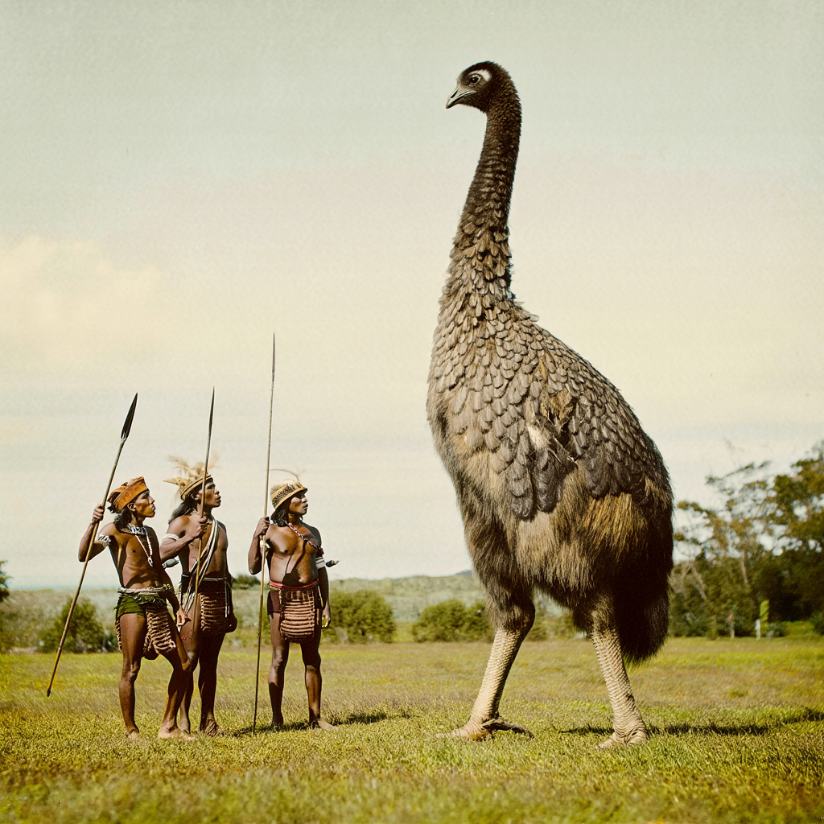When the first people set foot on the shores of New Zealand, they encountered a creature unlike anything they had ever seen: the Moa. Towering, flightless, and completely wingless — not just unable to fly, but truly without wings — the Moa was a relic of a lost world. Unlike its cousins, the ostrich or emu, which still retain small, useless wings, the Moa had evolved to such a degree that even the bones of its forelimbs were gone.
Some species stood over four meters tall, making them the tallest birds to ever walk the Earth. Massive, long-necked, and leaf-browsing, the Moa filled the ecological role of large herbivores, much like deer or horses elsewhere. In a land with no native land mammals (besides bats), Moa had no natural predators — nothing to fear.
Until humans arrived.
In just a few short centuries after the ancestors of the Māori settled the islands, every species of Moa was gone. Hunted relentlessly for meat, eggs, and feathers — and pushed out by habitat loss — they vanished. And with them went their only predator: the Haast’s eagle, a raptor so large it could take down an adult Moa.
Today, the Moa stands as both symbol and warning — a reminder of the fragile uniqueness of New Zealand’s ecosystems, and of how quickly even giants can fall.
Silent. Wingless. Erased by time — and us.
Once rulers of a world without mammals. Now ghosts beneath the forest floor.
